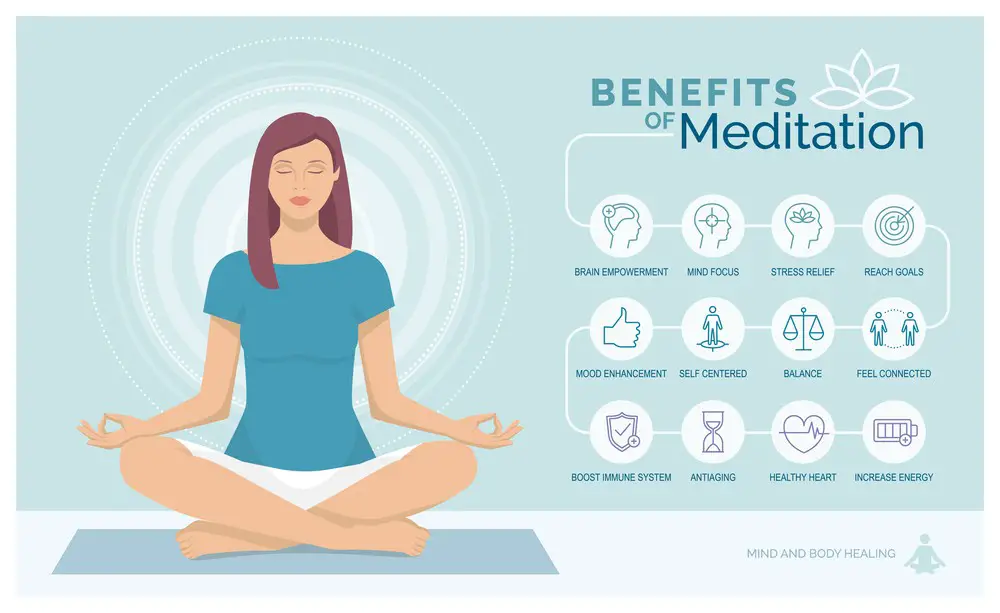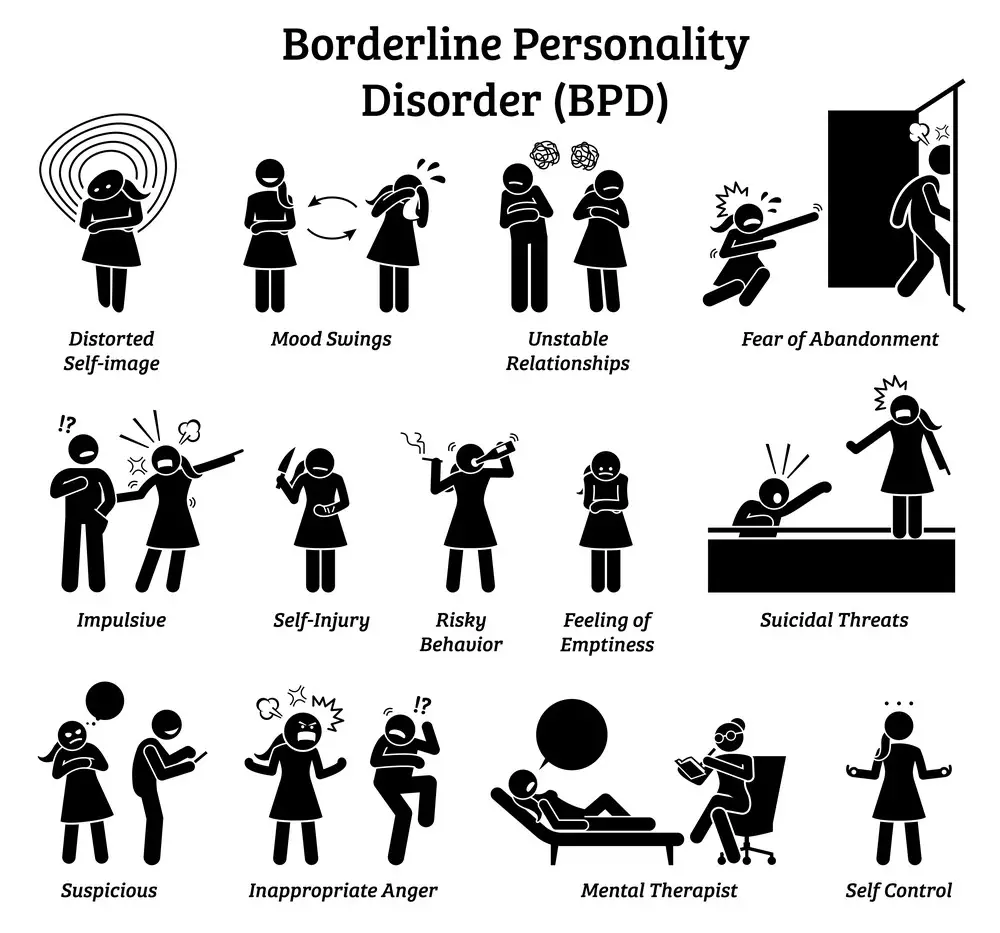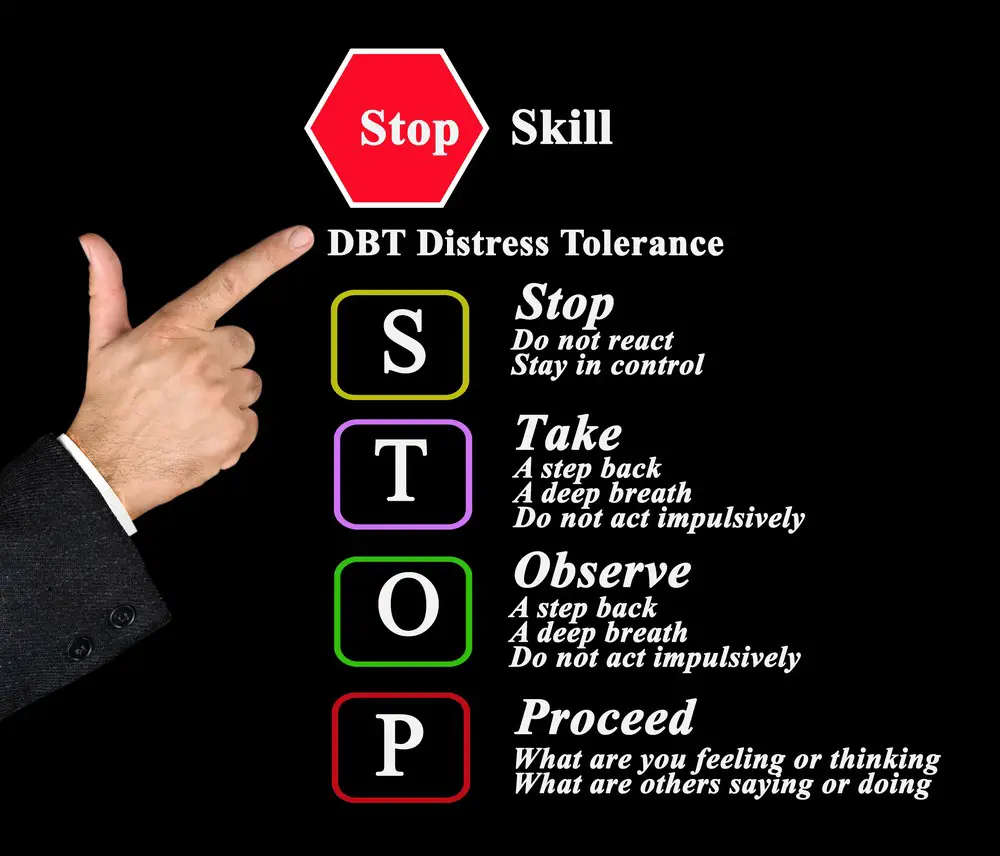As a BetterHelp affiliate, we receive compensation from BetterHelp if you purchase products or services through the links provided
Emotional permanence is a concept related to how consistently one feels and recognizes emotions, both in themselves and in others. For individuals with borderline personality disorder (BPD), a mental health disorder characterized by intense and fluctuating emotions, this sense of permanence can be particularly challenging. BPD often results in difficulties in maintaining stable relationships and a coherent sense of self, making the experience of emotional permanence even more complex.
In BPD, you might find your emotions are overwhelming and erratic, making it hard to believe that positive feelings such as love or happiness can last. This can lead to significant distress and instability in your life. Grappling with these intense feelings often requires specialized treatment approaches, including therapy and, in some cases, medication. Support is available, though, through various resources and help networks, which can guide managing symptoms and fostering emotional stability.
Key Takeaways
- Emotional permanence in BPD affects how emotions are experienced and perceived.
- BPD can disrupt stable relationships and one’s sense of self due to emotional fluctuations.
- Treatment and support are available to manage BPD and improve emotional stability.
 Understanding Emotional Permanence
Understanding Emotional Permanence
Emotional permanence is a concept that’s as intriguing as it is vital to our interpersonal relationships. Its role in Borderline Personality Disorder (BPD) offers valuable insights into the emotional challenges faced by those with the condition.
Concept and Definition
Emotional permanence is the understanding that others’ feelings towards us remain consistent, even when they are not in our immediate presence or when emotional expressions change. This mental ability is akin to object constancy, a term used in developmental psychology that refers to the understanding that objects remain the same despite changes in how they appear or are perceived.
- Emotional Permanence: A sense of stability in others’ emotions towards us.
- Object Constancy: The recognition that objects are consistent and unchanging despite variations in appearance.
An emotional permanence deficit can lead to anxiety and insecurity, as you may struggle to maintain a sense of being loved or valued if you cannot directly observe or confirm these feelings.
Key Takeaway: Emotional permanence means you’re secure in knowing that relationships are stable and love or friendship persists even in absence or silence.
Relation to BPD
For individuals with Borderline Personality Disorder, emotional permanence is often elusive. BPD can make it challenging to hold onto the comforting thought that someone’s affections or attitudes remain constant when they’re out of sight. This can result in frequent needs for reassurance and an intense fear of abandonment.
- Consistency of Emotions: People with BPD might doubt the continuity of others’ affections.
- Fear of Abandonment: Without emotional permanence, individuals may become preoccupied with the belief that loved ones will leave them.
Understanding emotional permanence and its deficit is crucial in BPD, as it shapes how individuals perceive and react to their social environment. Therapeutic strategies often address this issue directly, aiming to build a stronger and more consistent sense of emotional safety and connectedness for those with BPD.
Key Takeaway: If you have BPD, enhancing emotional permanence could significantly improve your relationships and reduce the fear of abandonment.
BPD Symptoms and Emotional Permanence
Emotional permanence is a challenge for those with Borderline Personality Disorder (BPD), often leading to a range of symptoms that can disrupt daily life. Understanding this can shed light on BPD’s complexities.
Mood Instability
With BPD, your mood swings can be sudden and intense. You might feel euphoric one moment, and the next, you’re in despair. This lack of emotional permanence means emotions don’t stay for long, and this instability can be confusing and exhausting.
Key Takeaway: Learning to predict patterns in your mood can help you prepare for and manage these shifts.
Fear and Anxiety
Your fear of abandonment could be the ghost that haunts many of your interactions. It can manifest in anxiety, making you worry excessively about your relationships. Remember, these fears are often not a reflection of reality but a symptom of BPD affecting your emotional permanence.
Key Takeaway: Techniques such as mindfulness can be a lifeline, helping you separate fears from the present moment.
Impact on Relationships
BPD can make relationships feel like a rollercoaster ride. You may plunge from adoration to feeling completely disconnected from your loved ones, making stable relationships a real challenge. Recognizing this pattern is your first step to steadier ground.
Key Takeaway: Open communication and establishing trust with others can create more stability in your relationships.
Causes of Emotional Permanence Issues in BPD
Emotional permanence issues in individuals with Borderline Personality Disorder (BPD) can be quite puzzling. They stem from a complex blend of genetic, environmental, and experiential factors.
Genetic Factors
Your genetic makeup plays a significant role in your psychological development. In the case of BPD:
- Predisposition: Certain genes may increase susceptibility to BPD, setting the stage for emotional permanence issues.
- Family History: A family history of BPD or other personality disorders is known to affect emotional stability.
Key Takeaway: Your genes can influence emotional regulation, crucial for establishing emotional permanence.
Environmental Influence
The environment you’re exposed to shapes your personality and emotional responses:
- Upbringing: An unstable or invalidating home environment is a common contributor to BPD.
- Peers and Society: Interactions with peers and societal norms also mold your emotional experiences.
Key Takeaway: An understanding environment helps reinforce the concept that feelings are valid and exist even when not actively felt.
Trauma and Early Experiences
Your early experiences have a lasting impact on how you perceive and handle emotions:
- Childhood Trauma: Experiences of abuse or neglect can disrupt the development of emotional permanence.
- Attachment Issues: Difficulties in early attachments can hinder your ability to maintain emotional continuity.
Key Takeaway: Healing from past trauma can be a critical step in overcoming emotional permanence issues in BPD.
Diagnosis
When exploring Borderline Personality Disorder (BPD), understanding its diagnosis is crucial. Your mental health professional will use specific criteria to determine if BPD is the correct diagnosis.
 Criteria for BPD
Criteria for BPD
According to the DSM-5, to receive a diagnosis of BPD, you need to meet at least five out of nine possible criteria. These criteria explore various aspects of emotions, relationships, self-image, and behavior. For example:
- Frantic efforts to avoid real or imagined abandonment.
- A pattern of unstable and intense interpersonal relationships.
- Markedly and persistently unstable self-image or sense of self.
- Impulsivity in at least two areas that are potentially self-damaging.
- Recurrent suicidal behavior, gestures, threats, or self-mutilating behavior.
- Affective instability due to a marked reactivity of mood.
- Chronic feelings of emptiness.
- Inappropriate, intense anger or difficulty controlling anger.
- Transient, stress-related paranoid ideation or severe dissociative symptoms.

Assessment of Emotional Permanence
Emotional permanence is not a formal criterion in the DSM-5 for diagnosing BPD, but it can be a characteristic challenge for individuals with the disorder. A mental health professional, like a doctor or therapist, might assess your sense of emotional permanence during the evaluation process. This could involve discussing whether you:
- Struggle with retaining an emotional connection to loved ones when they are out of sight.
- Frequently need reassurance of others’ feelings towards you.
- Experience a sudden shift in feelings based on the current situation or recent interactions.
Key Takeaway: The diagnosis of BPD is a careful process where a doctor will look for specific behaviors and feelings that match the DSM-5 criteria. Emotional permanence might also be discussed to understand your emotional experiences better.
Treatment Approaches
When it comes to emotional permanence and BPD, specific treatment approaches can be effective in helping you manage your symptoms and improve your quality of life.
 Dialectical Behavior Therapy (DBT)
Dialectical Behavior Therapy (DBT)
DBT is a form of therapy specifically designed to help people with BPD. It combines strategies like:
- Mindfulness: Teaching you to be fully present in the moment.
- Distress Tolerance: Enhancing your ability to tolerate pain in difficult situations.
- Emotion Regulation: Learning to manage and change intense emotions causing problems.
Key Takeaway: DBT can be a game-changer in helping you balance your emotions and reactions.
 Cognitive Behavioral Therapy (CBT)
Cognitive Behavioral Therapy (CBT)
CBT allows you to closely examine how your thoughts can affect your emotions and behavior. It’s about:
- Identifying negative thinking patterns.
- Challenging these thought patterns.
- Replacing them with more balanced thoughts.
Key Takeaway: CBT gives you the tools to reshape your thoughts about yourself and the world.

Mindfulness and Meditation
Mindfulness and meditation can be an oasis of calm in the stormy seas of BPD. It’s all about:
- Mindfulness Meditation: Focusing on the now and embracing each moment.
- Consistent Practice: Incorporating it into your daily routine for the best results.
Key Takeaway: These practices teach you to step back and observe your thoughts without judgment.
Support Groups and Community
You’re not in this alone. Support groups and community involvement can offer:
- A safe space to share experiences.
- Emotional support from others who understand what you’re going through.
- Practical strategies from peers that can be applied to your daily life.
Key Takeaway: Connecting with others can provide comfort and help you feel less isolated.
Managing BPD and Emotional Stability
Finding balance with Borderline Personality Disorder (BPD) is challenging but achievable. This section focuses on developing skills for emotional stability through emotion regulation, nurturing healthy relationships, and making supportive lifestyle changes.
Emotion Regulation Techniques
Regulating emotions is like navigating a complex network of roads. Let’s simplify the map:
- Identify Emotions: Start keeping a diary to track mood changes and triggers.
- Mindfulness: Practice mindfulness exercises to remain present and reduce stress.
- Acceptance: Learn to accept emotions without judgment to stop them from escalating.
Key Takeaway: Become the driver of your emotional journey by understanding your emotions and how to handle them.
Building Healthy Relationships
Relationships can act as emotional anchors, not just waves. To build solid connections:
- Establish Boundaries: Clearly communicate your needs and limits.
- Effective Communication: Use “I” statements to express yourself without blame.
- Mutual Support: Seek relationships that are reciprocal and nurturing.
Key Takeaway: Cultivating healthy relationships involves respecting yourself and others and fostering mutual growth.
Self-Care and Lifestyle Changes
You’re crafting the narrative of your life; self-care is your toolkit. Create a routine that resonates:
- Exercise: Include regular physical activity to reduce anxiety and improve mood.
- Nutrition: Fuel your body with foods that enhance energy and mental clarity.
- Sleep: Prioritize sleep hygiene to help regulate emotions and decrease irritability.
Key Takeaway: Self-care is your secret ingredient to living a more balanced life amidst the challenges of BPD.
Crisis Management and Long-Term Strategies
In managing Borderline Personality Disorder (BPD), you’ll find that knowing how to handle moments of great emotional upheaval and forging long-term emotional care are equally important. Your journey involves learning to preemptively soften the blow of potential crises and building a network of consistent emotional support.
Preventing Crisis Situations
To prevent crises, it’s crucial to have a personalized plan that addresses your unique triggers. Let’s break it down:
- Identify Triggers: Keep a journal to spot patterns in your emotional reactions.
- Create a Routine: Establishing a structured daily schedule can provide stability.
- Practice Mindfulness: Techniques like deep breathing or meditation can help keep distress at bay.
Key Takeaway: You’re building a toolbox with strategies to sidestep emotional landmines.
Handling Suicidal Ideation
When suicidal thoughts creep in, they can be terrifying. Here’s what you can do:
- Recognize the Signs: Be aware of thoughts of self-harm or suicide as early warning signs.
- Seek Immediate Help: If these thoughts are present, immediately contact a hotline or trusted healthcare professional.
Key Takeaway: Your safety is paramount; reaching out for help is a sign of strength.
Long-Term Emotional Support
For the marathon who is living with BPD, long-term emotional support plays a vital role:
- Cultivate Relationships: Forge strong connections with those who offer understanding and reassurance.
- Ongoing Therapy: Engage in regular sessions with a therapist experienced in BPD.
- Build Coping Skills: Engage in activities and hobbies that promote positive mental health.
Key Takeaway: Like a lighthouse, long-term support provides the guidance to navigate emotional storms.
BPD and Other Conditions
When exploring Borderline Personality Disorder (BPD), it’s crucial to understand its frequent co-occurrence with other mental health conditions and how external factors like stress can exacerbate symptoms.
Comorbidity with Other Disorders
BPD often doesn’t come knocking on your door alone. It’s quite common for it to bring along companions in the form of other disorders:
- Anxiety Disorders: A significant number of people with BPD also experience anxiety disorders, which can intensify BPD symptoms like fear of abandonment and impulsive behavior.
- Post-Traumatic Stress Disorder (PTSD): Given the high rates of trauma among individuals with BPD, PTSD co-occurrence is not surprising. PTSD’s hypervigilance can magnify the emotional sensitivity characteristic of BPD.
- Depression: Hand in hand with BPD, depression can deepen feelings of emptiness and instability.
Key Takeaway: Recognize that BPD often exists alongside anxiety and mood disorders, creating a complex psychological landscape that requires holistic treatment strategies.
Impact of Stress and Anxiety
Your journey with BPD might feel like it’s on a road paved with stress and anxiety, making it important to understand their impact:
- Stress can be a magnifying glass for BPD symptoms, making them more prominent and challenging to manage.
- Stress might transform manageable situations into overwhelming torrents of emotion in your everyday life.
- Anxiety tightens the grip on your BPD symptoms by adding a layer of constant worry or fear that can hinder your coping mechanisms.
- Even general anxiety, without being part of a disorder, can significantly impact your emotional regulation and interpersonal relationships.
Key Takeaway: Managing stress and anxiety is a valuable part of your BPD treatment plan because it can lead to a more stable emotional landscape.
Outlook and Recovery
Navigating borderline personality disorder (BPD) with emotional permanence issues can be challenging, but with the right support and strategies, there is hope for a fulfilling life.
Prognosis for BPD with Emotional Permanence Issues
The prognosis for BPD can be positive, especially with early intervention and consistent treatment. Seeking help from a mental health professional is crucial. Therapy, such as Dialectical Behavior Therapy (DBT), can be particularly effective. This approach often involves:
- Learning mindfulness to stay present and manage intense emotions.
- Developing skills for healthy relationships to improve social interactions.
- Engaging in exercise and other activities to boost mood and reduce stress.
It’s key to remember that recovery is a journey, not a destination. Success looks different for everyone, and gradual progress is still progress.
Key Takeaway: Therapy and proactive management strategies offer a hopeful outlook for those with BPD.
Living with BPD: Coping and Success Stories
Living with BPD means finding ways to cope with daily challenges. Here are some strategies and real-life success markers that have helped others:
- Regular meetings with a support group to share experiences and feel understood.
- Maintaining a routine that includes therapy sessions and self-care practices.
- Practicing coping strategies like mindfulness.
Success stories often feature turning points where individuals find something that works for them, whether it’s a particular type of treatment, support group, or personal strategy. Each victory is a step towards lasting recovery, no matter how small.
Key Takeaway: Embrace personal coping methods and the support of others to navigate BPD with confidence.
Resources and Finding Help
Seeking the right resources can be a game-changer when managing emotional permanence in borderline personality disorder (BPD). Whether looking for support networks or considering professional therapy options, there’s help tailored to your needs.
Local and Online Support Networks
- Local Support Groups:
- Look for BPD support groups in your area. They offer a space for sharing experiences and coping strategies.
- Organizations like NAMI (National Alliance on Mental Illness) in Florida provide local group listings.
- Online Communities:
- Access online forums and support networks 24/7.
- Use platforms like DBSA (Depression and Bipolar Support Alliance) for virtual assistance.
Key Takeaway: Tapping into local and online support networks can create a sense of belonging and provide coping strategies from peers.
Professional Help and Therapy Options
- Therapy Options:
- Dialectical Behavior Therapy (DBT): Specifically designed for BPD, it combines cognitive-behavioral techniques with mindfulness.
- Cognitive Behavioral Therapy (CBT): Helps identify and change negative thinking patterns.
- Finding a Therapist:
- Use the Psychology Today directory to find therapists specialized in BPD treatment.
- Ensure the mental health professional is licensed and experienced with BPD.
- Treatment Facilities:
- Research treatment centers that offer specialized BPD programs, such as inpatient, outpatient, and partial hospitalization.
Key Takeaway: Professional help can provide tailored therapy options and strategies to manage BPD effectively, often leading to better outcomes.
Frequently Asked Questions
Emotional permanence in BPD (Borderline Personality Disorder) can shape how individuals experience their emotions and relationships. These FAQs shed light on the matter.
What techniques can help someone with BPD improve their sense of emotional permanence?
You might find mindfulness exercises and grounding techniques beneficial to maintain constant awareness of emotions. Engaging in regular therapy, like Dialectical Behavior Therapy (DBT), helps solidify these skills. Key takeaway: Practice and patience with these techniques can foster better emotional regulation.
What are common signs that a person might be experiencing a lack of emotional permanence due to BPD?
If you’re frequently doubting loved ones’ affections after they’re out of sight or you feel suddenly empty or unstable when alone, these could be signs. It’s also common to quickly swing from idealization to devaluation in relationships.
How does emotional permanence affect relationships for individuals with BPD?
Struggles with emotional permanence may lead to misunderstandings and conflicts as you might misinterpret temporary absences or changes in tone. It’s important to communicate openly and work on understanding that emotions and relationships have continuity.
In what ways can therapy address emotional permanence issues in BPD patients?
Therapies like DBT and Cognitive Behavioral Therapy (CBT) help you develop strategies to understand and maintain emotional continuity. Therapists might use exercises tailored to help you recall and hold on to positive emotions and experiences.
Can emotional permanence issues be confused with symptoms of other conditions like PTSD or bipolar disorder?
Indeed, symptoms may overlap with other conditions, leading to confusion. For example, you might experience emotional dysregulation in PTSD or the rapid mood changes of bipolar disorder. A thorough evaluation by a healthcare professional is essential for accurate diagnosis.
How do professionals assess or test for emotional permanence challenges in the context of BPD?
Assessment can involve clinical interviews and self-report questionnaires that gauge your experience of emotions and relationships. Professionals look for patterns that suggest difficulties with maintaining consistent emotional experiences.
- 3 Ways Wearing a Hat Can Help Lower Your Stress Levels - April 19, 2025
- Breaking the Silence: Why Men’s Mental Health Matters More Than Ever - April 15, 2025
- How to Transform a Home’s Patio Space into a Relaxing Space - March 23, 2025
This site contains affiliate links to products. We will receive a commission for purchases made through these links.


 Understanding Emotional Permanence
Understanding Emotional Permanence Criteria for BPD
Criteria for BPD Dialectical Behavior Therapy (DBT)
Dialectical Behavior Therapy (DBT) Cognitive Behavioral Therapy (CBT)
Cognitive Behavioral Therapy (CBT)
